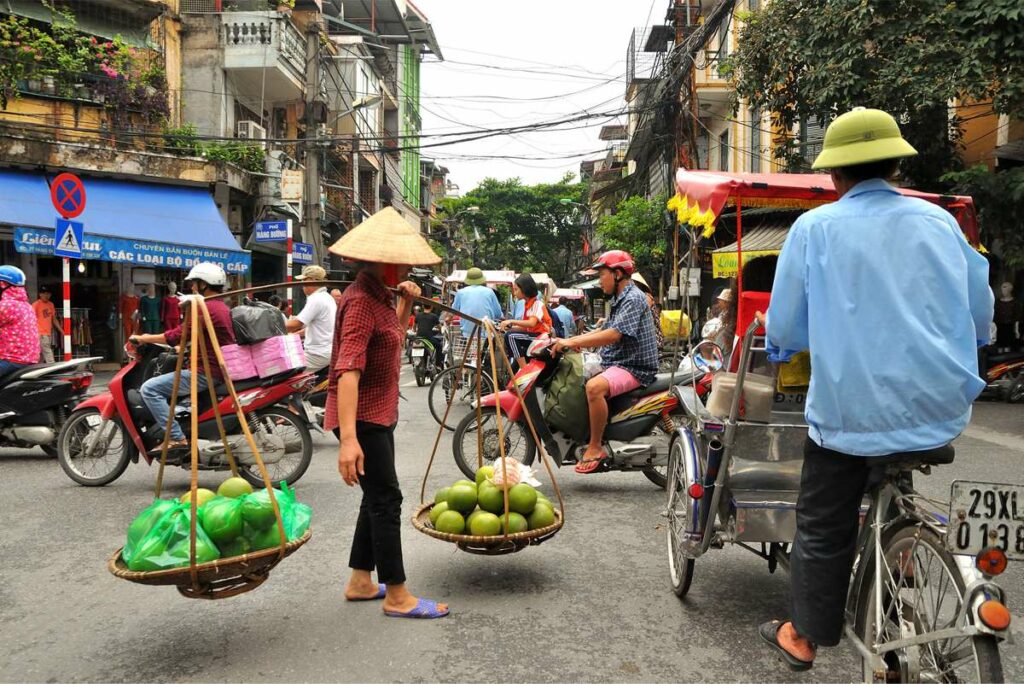What is the Hanoi Flag Tower?
The Hanoi Flag Tower is a historic monument located within the southern grounds of the Thang Long Imperial Citadel, a UNESCO World Heritage Site in central Hanoi.
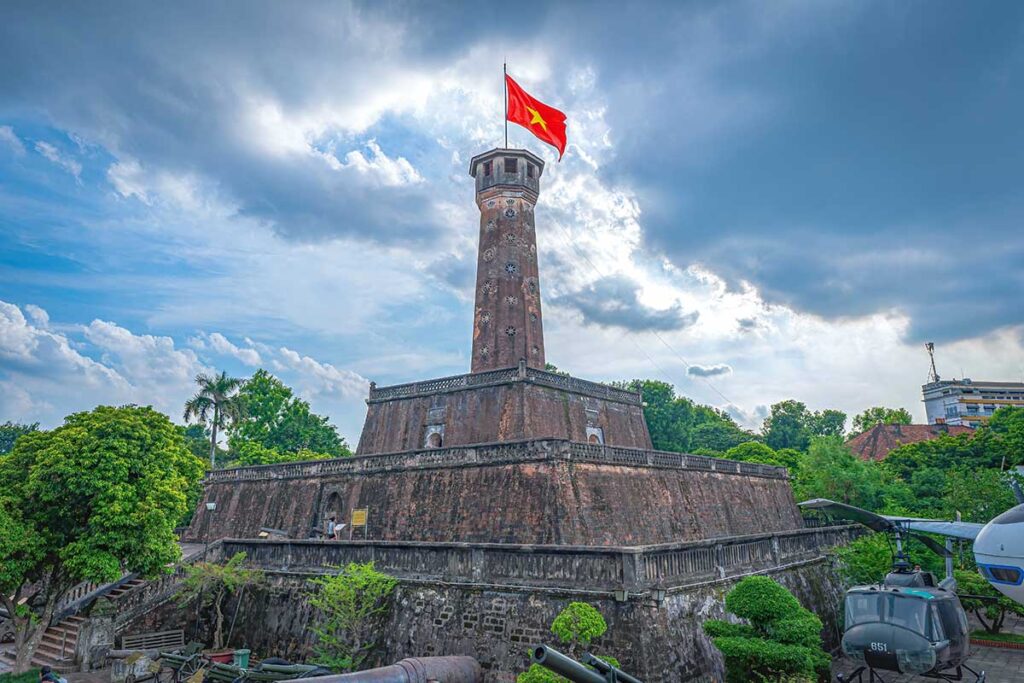
Originally built as an observation post in the early 19th century, it now stands as a proud symbol of the capital’s heritage and national identity. As of 2025, the tower remains intact but is not fully open for climbing—visitors can explore the base area and view it up close from the surrounding grounds. You’ll find it at 28A Dien Bien Phu Street, Ba Dinh District, directly across from Lenin Park.
History of the Hanoi Flag Tower
Origins and Nguyen Dynasty Construction (1805–1812)
The Hanoi Flag Tower was constructed between 1805 and 1812 during the reign of Emperor Gia Long, the founding ruler of the Nguyen Dynasty. It was built on the grounds of the former Tam Mon Palace, marking the southern entrance to the central axis of the Thang Long Imperial Citadel. Its original purpose was military—serving as an observation post and signaling tower, offering views across the citadel and surrounding countryside.
Survival through Colonial and War Periods
Unlike many buildings within the citadel complex, the Flag Tower was not destroyed during the French colonial occupation between 1894 and 1897. Instead, it was repurposed by the French army as a strategic lookout. During the American War, it once again served as an observation post—this time for Hanoi’s air defense forces. Its continuous use in different historical eras helped preserve its structure while reinforcing its role in Vietnam’s military heritage.
Flag-Raising on Liberation Day (October 10, 1954)
One of the most iconic moments in the tower’s history occurred on October 10, 1954, the day Hanoi was officially liberated from French control. At exactly 3 p.m., as a military band played the national anthem, the red flag with a yellow star was raised on top of the tower for the first time. This moment became a defining image of national pride and marked a new chapter in Vietnam’s modern history.
Post-war Symbolism
Since 1986, a 24-square-meter national flag has flown from the top of the tower at all times, replaced every few weeks as needed. The tower became a lasting symbol of Vietnamese independence and resilience, and its image was even featured on some of the country’s early banknotes issued by the State Bank of Vietnam. Its presence in currency, art, and public memory reflects its status as more than just a building—it is a national icon.
Recent Changes in Management (2024–2025)
For decades, the Hanoi Flag Tower was part of the Vietnam Military History Museum complex, with limited independent access. In late 2024, it was officially transferred to the management of the Thang Long – Hanoi Heritage Conservation Center. As of early 2025, visitors can walk around the base and photograph the site, but interior access remains restricted while restoration and safety evaluations are ongoing. This shift aligns the tower more closely with the wider Thang Long Citadel heritage site and may lead to better integration with future tourism and conservation efforts.
Highlights of the Hanoi Flag Tower
Even though you currently can’t climb to the top, the Hanoi Flag Tower remains a fascinating structure to explore from the outside. Its layered design, historical inscriptions, and clever construction reveal a lot about both its original function and enduring symbolism. Here are some architectural and cultural details to look out for:
1. The three-tiered base
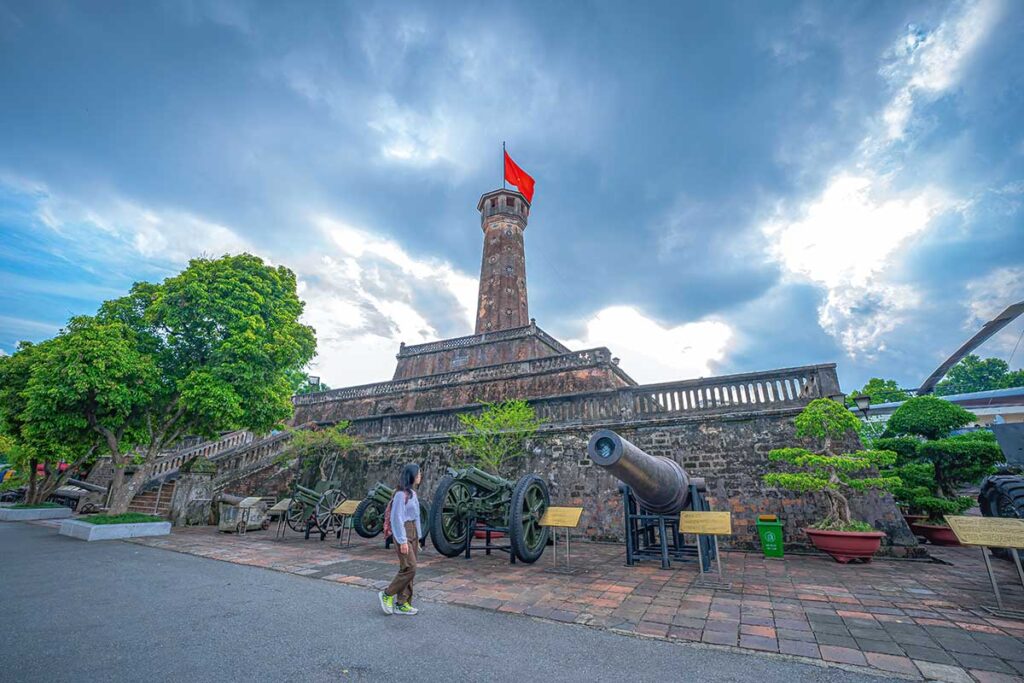
The base of the tower consists of three square tiers that get smaller with height. The first tier measures 42.5 meters per side and stands 3.1 meters tall. The second tier is 27 meters wide and 3.7 meters high, while the third tier is 12.5 meters wide and 5.1 meters tall.
On the second level, three of the four doors are engraved with poetic phrases, each related to light and direction:
- East door – Nghênh Húc (“To welcome dawn’s sunlight”)
- South door – Hướng Minh (“Directed to the sunlight”)
- West door – Hồi Quang (“To reflect light”)
These inscriptions add symbolic meaning to what was otherwise a functional military post.
2. The spiral staircase and observation tower
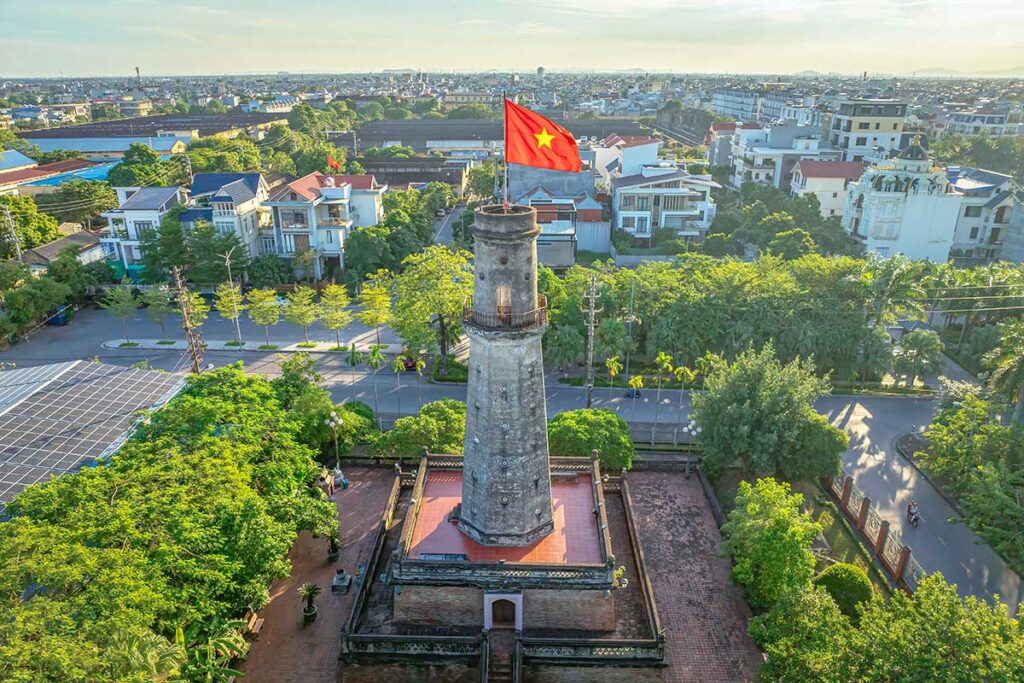
Above the third tier rises an octagonal tower that narrows toward the top. Inside, a spiral staircase of 54 steps leads to the upper observatory, though access is currently restricted to preserve the structure.
What’s notable is how the tower was built for airflow and light: 39 flower-shaped and 6 fan-shaped windows are scattered along the shaft for ventilation—making it naturally lit and surprisingly cool, even in Hanoi’s summer heat.
At the very top is a small octagonal observatory, 3.3 meters tall with eight windows offering views in every direction. While it’s closed to visitors, it once offered panoramic views over Hanoi and was used during both the colonial and war periods for military observation.
3. The flag and its symbolism
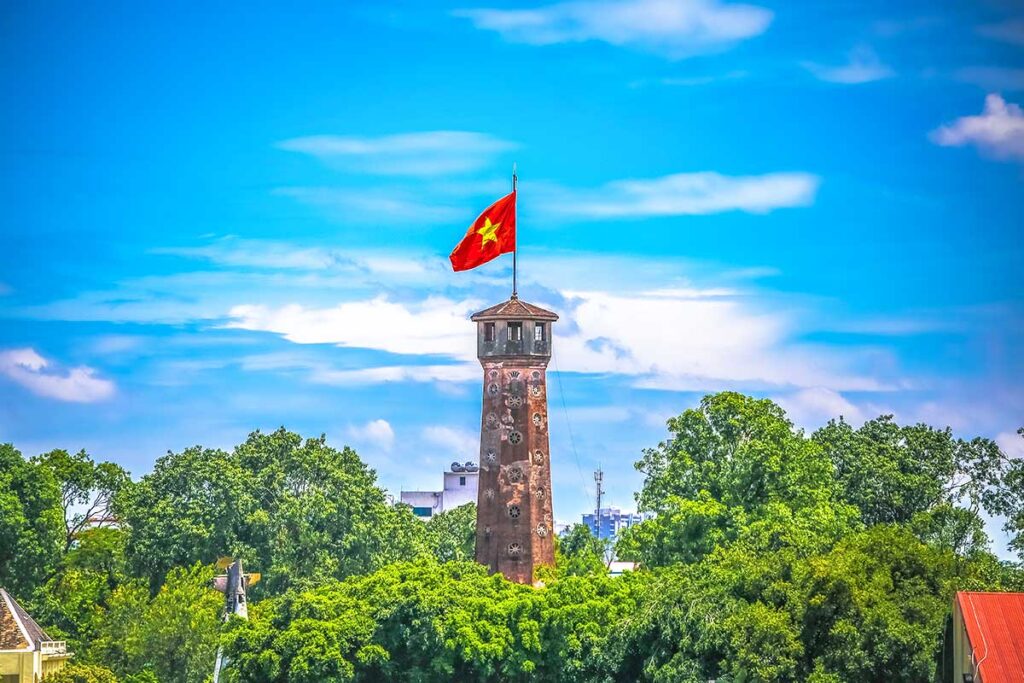
Flying from the tower since 1986, the Vietnamese national flag is a central part of the monument’s identity. The flag is 24 square meters in size and is replaced every few weeks to keep it in good condition.
Beyond its appearance, the flag is a powerful symbol of independence and unity. It was first raised here during the liberation of Hanoi in 1954, a moment still remembered by many older generations. From that day on, the flag has become part of the tower’s very purpose.
4. Interesting details and myths
Some of the tower’s more surprising features are practical, not decorative. Despite being built over 200 years ago, its design cleverly prevents rainwater from entering—even during heavy downpours. It’s also said to remain naturally cool inside thanks to its strategic windows and materials.
Historically, the tower once overlooked what the French called Elephant Lake, a bathing area for royal elephants. During both the colonial and American wars, it served as a military observation point, offering commanding views of the city and surrounding plains.
How to visit the Hanoi Flag Tower (and What to Expect)
Visiting status
As of 2025, the Hanoi Flag Tower is no longer managed by the Vietnam Military History Museum. It now falls under the Thang Long – Hanoi Heritage Conservation Center, aligning it more closely with the rest of the Imperial Citadel.
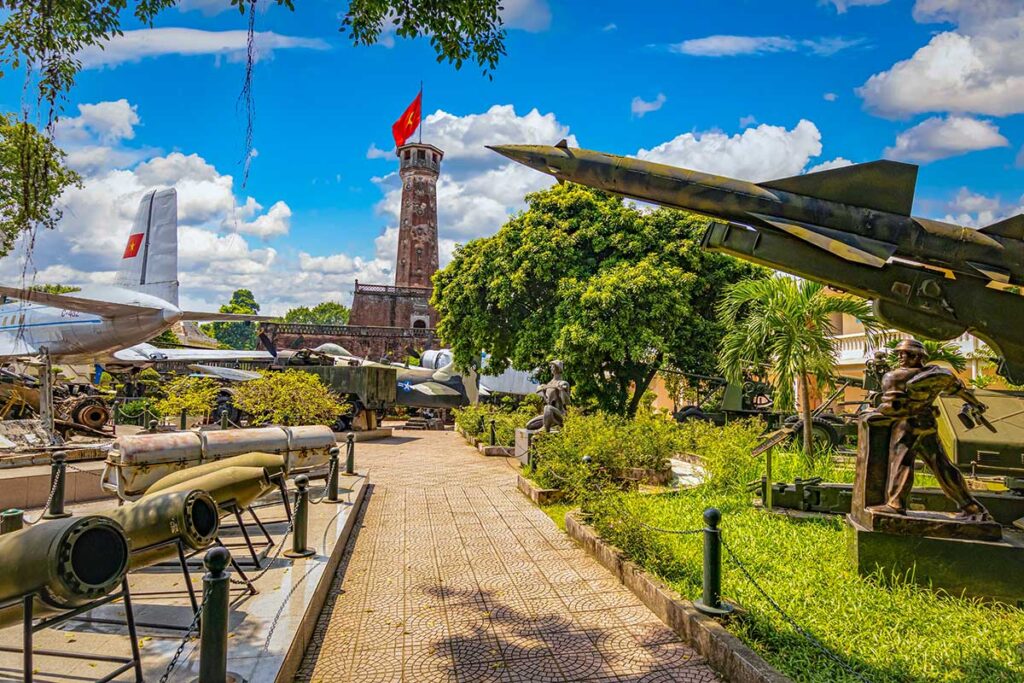
However, full access to the tower is still restricted. Due to ongoing safety evaluations and conservation planning, visitors can currently only explore the base area, walk around the outside, and take photos. Access to the interior and upper levels remains closed until further notice.
Entrance, Hours & Tickets
The Flag Tower is expected to be incorporated into the general ticket for the Thang Long Imperial Citadel. Entry costs 100,000 VND per person, with tickets sold at the main gate nearby. The site is open daily from 8:00 a.m. to 5:00 p.m.
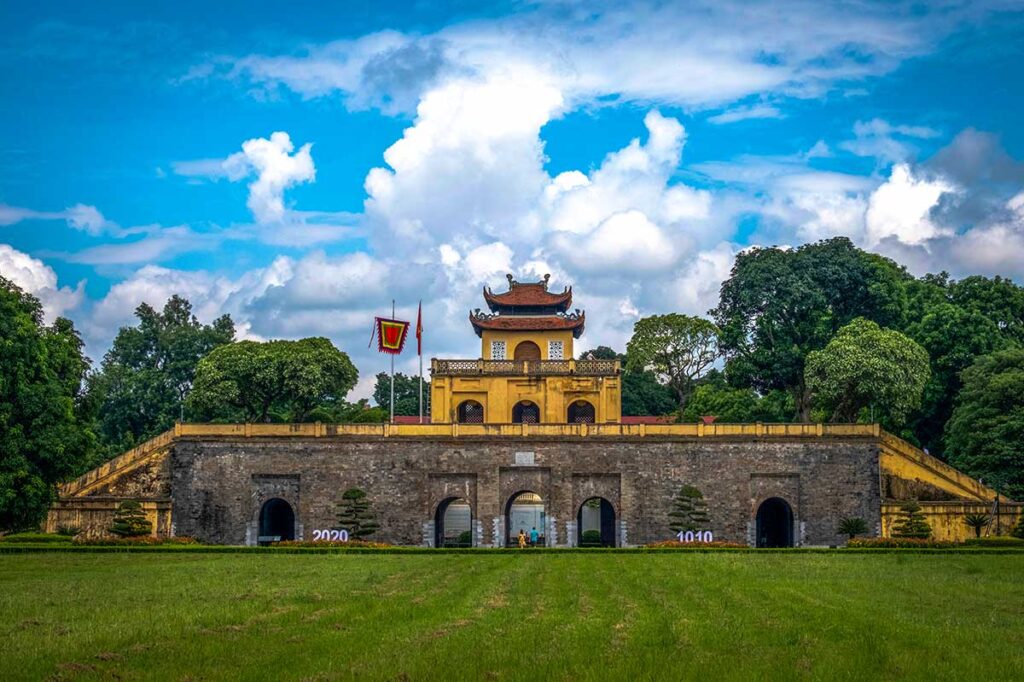
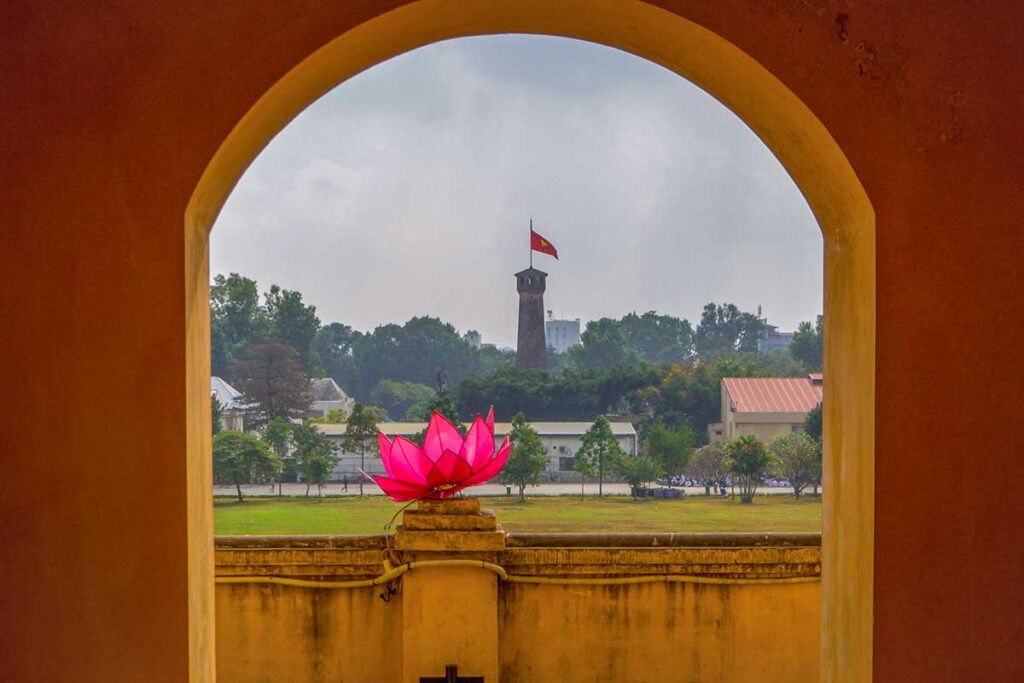
If you’re only passing by the tower from the street or Lenin Park, no ticket is needed. But to explore the full citadel grounds—including Doan Mon Gate, Kinh Thien Palace, and the archaeological areas—you’ll want to enter through the main gate.
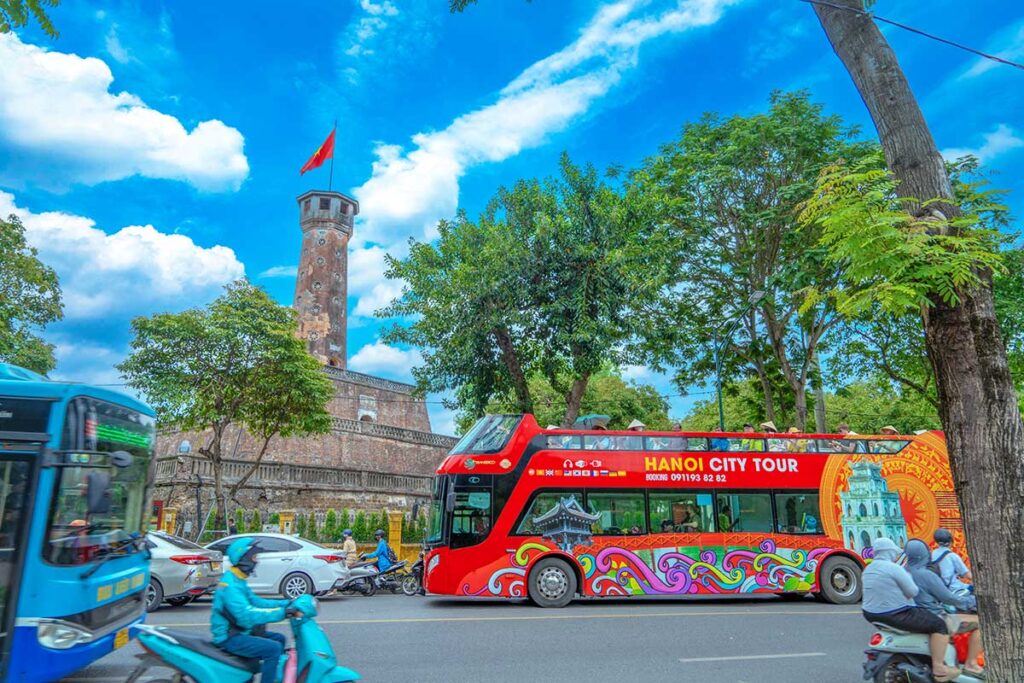
How to get there
The Hanoi Flag Tower is located about 1.5 km west of the Old Quarter, making it an easy 15–20 minute walk. For most travelers, walking or taking a short ride by Grab (Vietnam’s ride-hailing app) is the simplest option.
If you’re already visiting nearby sights like the Temple of Literature or Ho Chi Minh Mausoleum, it makes sense to include the tower as a stop along the way.
Tips from experience
- Best photo spot: Lenin Park, directly across the street, offers a wide-angle view of the tower.
- Ideal timing: Mornings between 9:00 and 10:30 a.m. tend to be cooler, quieter, and have better light for photos.
- Keep expectations realistic: While the tower is impressive from the outside, you currently can’t go inside or climb it—so it’s best to treat it as a quick stop rather than a main event.
- Combine with other sites: This part of Hanoi is packed with historic attractions, so include the Flag Tower as part of a broader walking route through Ba Dinh or the Thang Long Citadel grounds.
What to see near the Hanoi Flag Tower
The Hanoi Flag Tower sits at the edge of Ba Dinh District, and there’s plenty to see in the immediate area. It’s a natural stop if you’re exploring this part of the city on foot or by car.
Right next to the tower is the Imperial Citadel of Thang Long, with its historic gates, palace foundations, and underground command bunker. Across the street is Lenin Park, a popular open space with the Lenin statue and a good view of the tower.
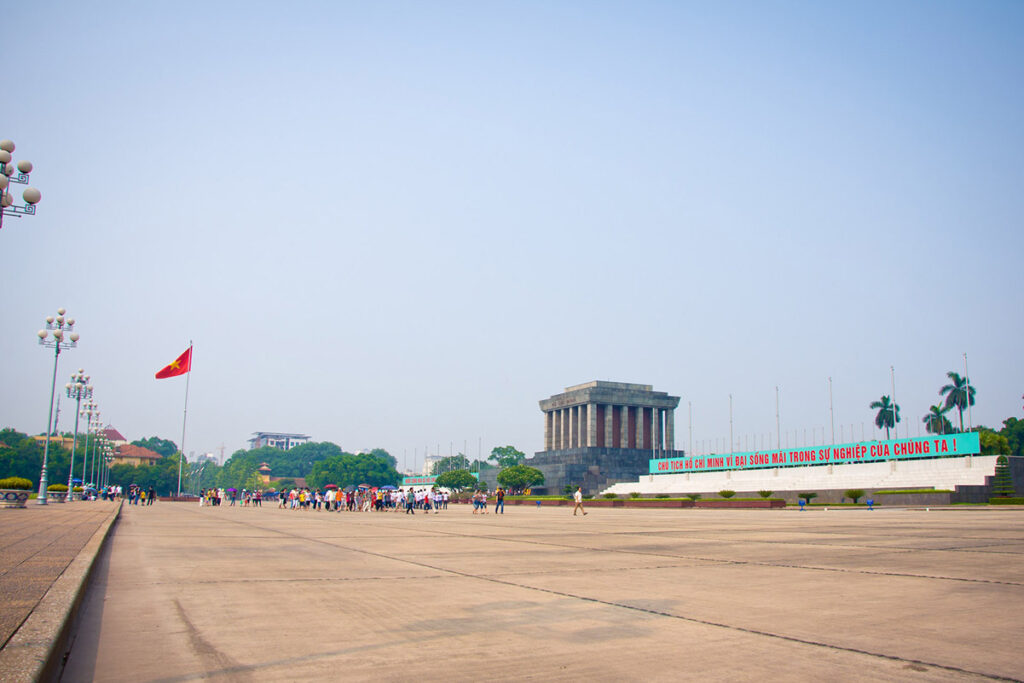
A bit further to the west, you’ll reach Ba Dinh Square, home to several of Hanoi’s most important landmarks. This includes the Ho Chi Minh Mausoleum, Presidential Palace, One Pillar Pagoda, and Ho Chi Minh’s Stilt House—all clustered within walking distance of each other.
Heading south of Lenin Park, you’ll find the Vietnam National Fine Arts Museum, a good indoor stop for art and history. Just behind it is the Temple of Literature, another well-known landmark with shaded courtyards and Confucian architecture.
If you’re spending a day discovering central Hanoi, the Flag Tower fits easily into a broader route that covers many of the capital’s key cultural and historical sites.


